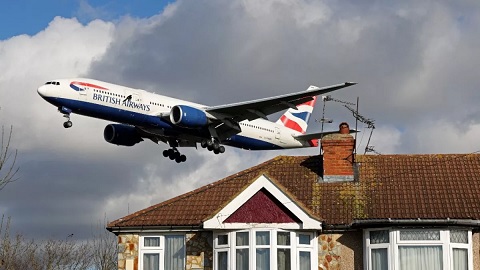Imagine a peaceful evening at home, only to be disrupted by the incessant roar of traffic or the booming music from a nearby party. Noise pollution, the unwanted or excessive sounds that disrupt our daily lives, is a growing concern in today’s world. It can negatively impact our health and well-being, causing stress, sleep disruption, and even hearing loss. Fortunately, measures like noise ordinances and surrounding bylaws, and environmental noise control play a crucial role in mitigating noise pollution and creating a more peaceful environment for everyone. Understanding these regulations and their role is essential in building healthier and more balanced soundscapes in our communities.
The Detrimental Effects of Noise Pollution
We encounter noise pollution in almost every aspect of our daily lives. Traffic on busy roads, construction projects hammering away, loud music from entertainment venues, and even the hum of household appliances, all contribute to the growing cacophony of sounds that surrounds us. This constant exposure to excessive noise can have a significant negative impact on our physical and mental health. Studies have shown that chronic noise pollution can lead to increased stress levels, sleep disturbances, and even hearing loss. It can also contribute to cardiovascular problems, cognitive decline, and decreased productivity. Addressing noise pollution is crucial for creating a healthier and more sustainable living environment for all.
Understanding Noise Ordinances
Noise ordinances are local laws or bylaws established by municipalities to regulate noise levels within a community. They aim to protect residents from unreasonable noise disturbance and promote peaceful living conditions. These ordinances typically establish acceptable noise limits for different times of day and zones within a community. For example, residential areas might have stricter noise restrictions during the evening and nighttime hours, while commercial areas may have higher allowable noise levels during daytime business hours. Noise ordinances often specify acceptable decibel (dB) levels to ensure objective measurement and enforcement. Violating noise ordinances can result in consequences such as fines or warnings, depending on the severity and frequency of the offense.
The Role of Environmental Noise Control
Environmental noise control goes beyond the regulations outlined in noise ordinances. Environmental noise control agencies are tasked with implementing broader strategies for managing noise pollution within a community. These agencies employ a multi-pronged approach, including noise monitoring, enforcing noise ordinances, collaborating with noise source industries, and promoting noise reduction technologies. Noise monitoring involves strategically placed equipment to measure and track noise levels throughout the community. Environmental noise control agencies work closely with law enforcement to ensure compliance with noise ordinances.
Furthermore, they collaborate with industries that generate significant noise pollution, such as construction companies and manufacturing facilities, to encourage the adoption of quieter practices and technologies. This might involve using sound barriers during construction projects or implementing quieter equipment within factories. Environmental noise control plays a crucial role in promoting a culture of noise reduction and encouraging quieter practices within various sectors.
Individual Efforts and Community Engagement
While noise ordinances and environmental control agencies play a vital role in managing noise pollution, individual responsibility is also crucial. We all have a role to play in minimizing noise generation and creating a more peaceful environment. Simple actions like being mindful of noise levels during quiet hours, using headphones for personal entertainment instead of loudspeakers, and maintaining equipment properly can significantly reduce noise pollution at the source.
Community engagement is another powerful tool in combating noise pollution. Residents can advocate for stricter noise ordinances in their communities if existing regulations are deemed insufficient. Community awareness campaigns can educate residents about the negative impacts of noise pollution and encourage responsible noise management practices. A collaborative effort between individuals, communities, and environmental noise control agencies is essential for achieving effective noise pollution management.
The Path Towards a Quieter Future
Combating noise pollution and creating a more peaceful environment for everyone requires ongoing efforts. Advancements in noise reduction technologies offer promising solutions. Quieter construction practices, the adoption of electric vehicles, and the use of sound-absorbing materials in building design can significantly reduce noise pollution sources. Urban planning also plays a vital role. Creating noise-resilient communities involves incorporating green spaces that act as natural sound barriers and planning road layouts that minimize traffic noise in residential areas.
Moving forward, continued collaboration between governments, communities, and industries is essential for developing and implementing effective noise pollution control strategies. By combining stricter regulations, innovative noise reduction technologies, and responsible noise management practices, we can create a quieter future for ourselves and generations to come.
Conclusion
Noise pollution is a serious issue that can negatively impact our health and well-being. However, by understanding the role of noise ordinances, environmental noise control, and individual responsibility, we can take action to create a more peaceful and healthy environment for everyone. Educate yourself about noise ordinances in your community. Advocate for stricter regulations if necessary. Make responsible noise management a part of your daily life. And remember, every small effort counts. Together, we can turn down the volume on noise pollution and create a soundscape that fosters well-being, productivity, and a sense of serenity in our communities.
